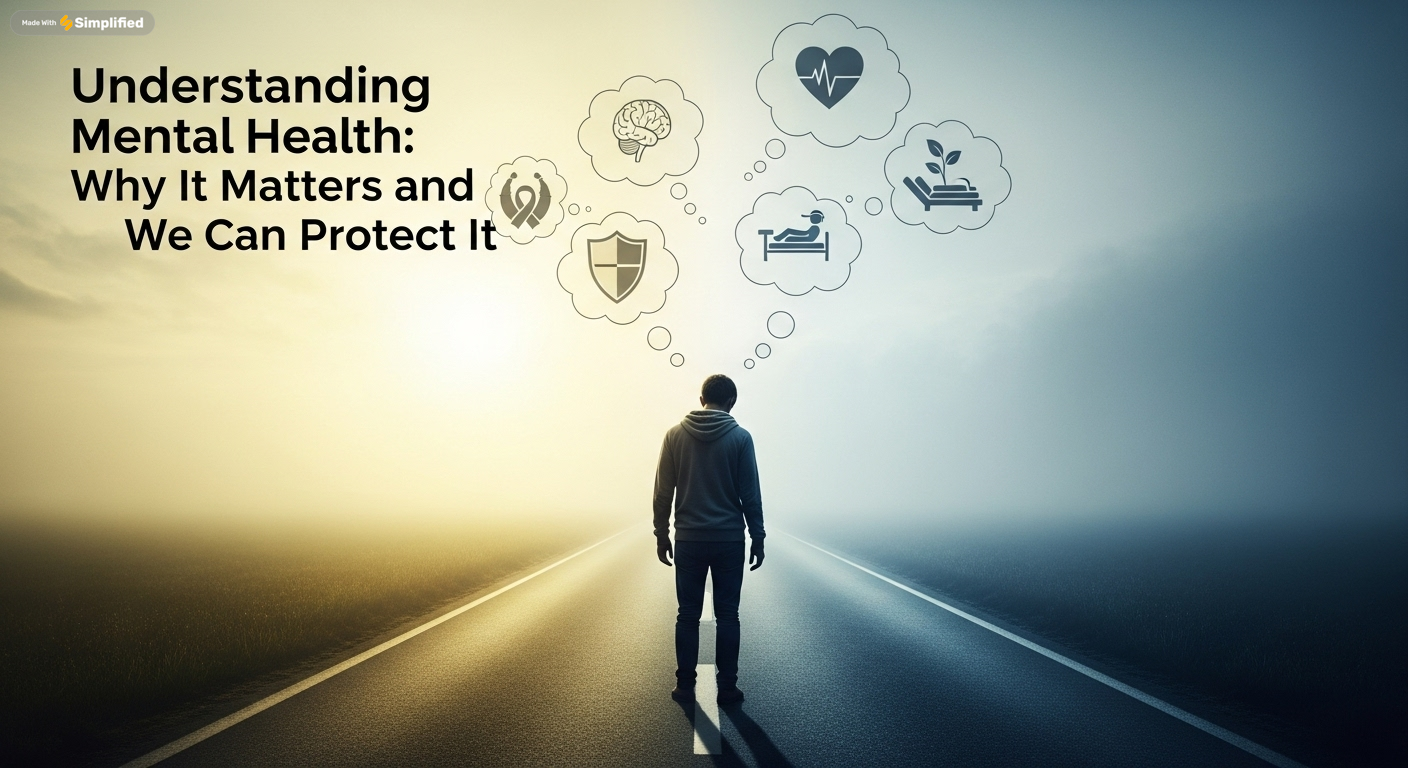
Youth Mental Health: Building Strong Foundations for the Future
Mental health is vital at every stage of life, but childhood and adolescence are particularly critical. These early years shape how young people think, feel, and respond to the world around them. Unfortunately, mental health challenges are becoming increasingly common among children and teens. Rising academic pressures, social media use, bullying, and family stress all contribute to an environment where young people often struggle silently. Addressing youth mental health is not just about preventing illness—it’s about creating strong foundations for a lifetime of emotional resilience, confidence, and well-being.
The teenage brain is still developing, especially in areas responsible for decision-making, emotions, and impulse control. This makes young people more vulnerable to stress, anxiety, and risky behaviors. Poor mental health during adolescence can impact education, relationships, and even long-term career opportunities.
Studies show that:
Half of all mental health conditions begin by age 14, and three-quarters by age 24.
Suicide is one of the leading causes of death among teenagers worldwide.
Early intervention significantly increases recovery and long-term outcomes.
This highlights the urgency of providing support before problems become severe.
Common Mental Health Issues in Youth
1. Anxiety Disorders
Many children and teens experience intense worry about school, friendships, or the future. If left untreated, anxiety can affect sleep, concentration, and physical health.
2. Depression
Depression among young people often appears as irritability, withdrawal, or loss of interest in once-enjoyed activities. It can lead to low self-esteem, academic struggles, and in severe cases, self-harm.
3. Bullying and Cyberbullying
Bullying damages self-image and creates long-lasting emotional scars. Today’s digital world has expanded this problem through cyberbullying, which follows children home via phones and social media.
4. Eating Disorders
Teenagers may develop unhealthy relationships with food and body image, influenced by media, peer pressure, or personal struggles. Eating disorders can be life-threatening if not treated early.
5. Substance Use
Some young people turn to alcohol, vaping, or drugs as a way to cope with stress or fit in socially. Early substance use increases the risk of addiction and poor mental health in adulthood.
Warning Signs to Watch For
Recognizing mental health challenges in youth can be difficult, since mood swings and behavior changes are common during adolescence. However, some warning signs include:
Sudden drop in academic performance
Withdrawal from friends and family
Extreme mood changes or irritability
Changes in eating or sleeping patterns
Risky behaviors or substance use
Talking about hopelessness or self-harm
Parents, teachers, and caregivers should pay attention to these signals and seek support when needed.
The Role of Family
Family plays a central role in shaping mental health. Supportive, loving relationships create a safe space for children to share their feelings. Parents can:
Encourage open communication: Let kids know it’s okay to talk about emotions.
Model healthy coping skills: Show how to handle stress without anger or avoidance.
Balance discipline with empathy: Setting boundaries while listening builds trust.
Limit screen time: Encourage activities that build real-world social connections.
When families prioritize emotional well-being, children learn resilience that lasts into adulthood.
The Impact of Schools
Schools are more than academic institutions—they are also places where children spend much of their emotional and social lives. Schools can support mental health by:
Offering counseling services and wellness programs.
Training teachers to recognize signs of distress.
Promoting anti-bullying policies and safe environments.
Teaching mindfulness, stress management, and emotional intelligence.
When schools take mental health seriously, students feel safer, more confident, and better able to learn.
The Influence of Social Media
Social media has transformed how young people connect, but it also adds pressure to compare, seek approval, and deal with online bullying. Excessive screen time has been linked to anxiety, poor sleep, and reduced self-esteem.
Encouraging balance is key. Setting healthy limits, promoting offline hobbies, and teaching digital literacy help children navigate online spaces more safely.
Building Resilience in Youth
Resilience—the ability to bounce back from setbacks—is one of the strongest protections against poor mental health. Young people can build resilience through:
Strong relationships: Friends, mentors, and supportive adults provide encouragement.
Problem-solving skills: Learning how to cope with challenges boosts confidence.
Positive self-talk: Encouraging inner voices that focus on strengths instead of flaws.
Physical activity: Sports and exercise reduce stress and improve mood.
Resilience does not mean avoiding problems but facing them with strength and hope.
Professional Help and Early Intervention
When mental health issues are serious, professional support is essential. Therapy, counseling, or in some cases, medication can provide tools to manage conditions effectively.
The earlier intervention begins, the better the outcomes. Communities should work to make mental health care affordable, accessible, and stigma-free for young people.
The Role of Communities and Policy
Youth mental health is not just a family or school responsibility—it’s a community priority. Governments and organizations can help by:
Funding youth mental health programs and hotlines.
Creating safe spaces for recreation and connection.
Training healthcare providers to recognize and treat mental health conditions early.
Passing policies that protect children from abuse, violence, and discrimination.
When society invests in young people’s mental health, it invests in a healthier, stronger future.
Conclusion
Youth mental health is the foundation of lifelong well-being. By nurturing emotional health during childhood and adolescence, we set young people up for success in school, relationships, and future careers.
Parents, teachers, communities, and governments all share responsibility in creating environments where young people feel safe, supported, and valued. By breaking stigma, promoting resilience, and offering timely help, we can protect the next generation from preventable suffering.
The message is clear: when we care for our youth’s mental health, we are building not only healthier individuals but also stronger, more compassionate societies.


